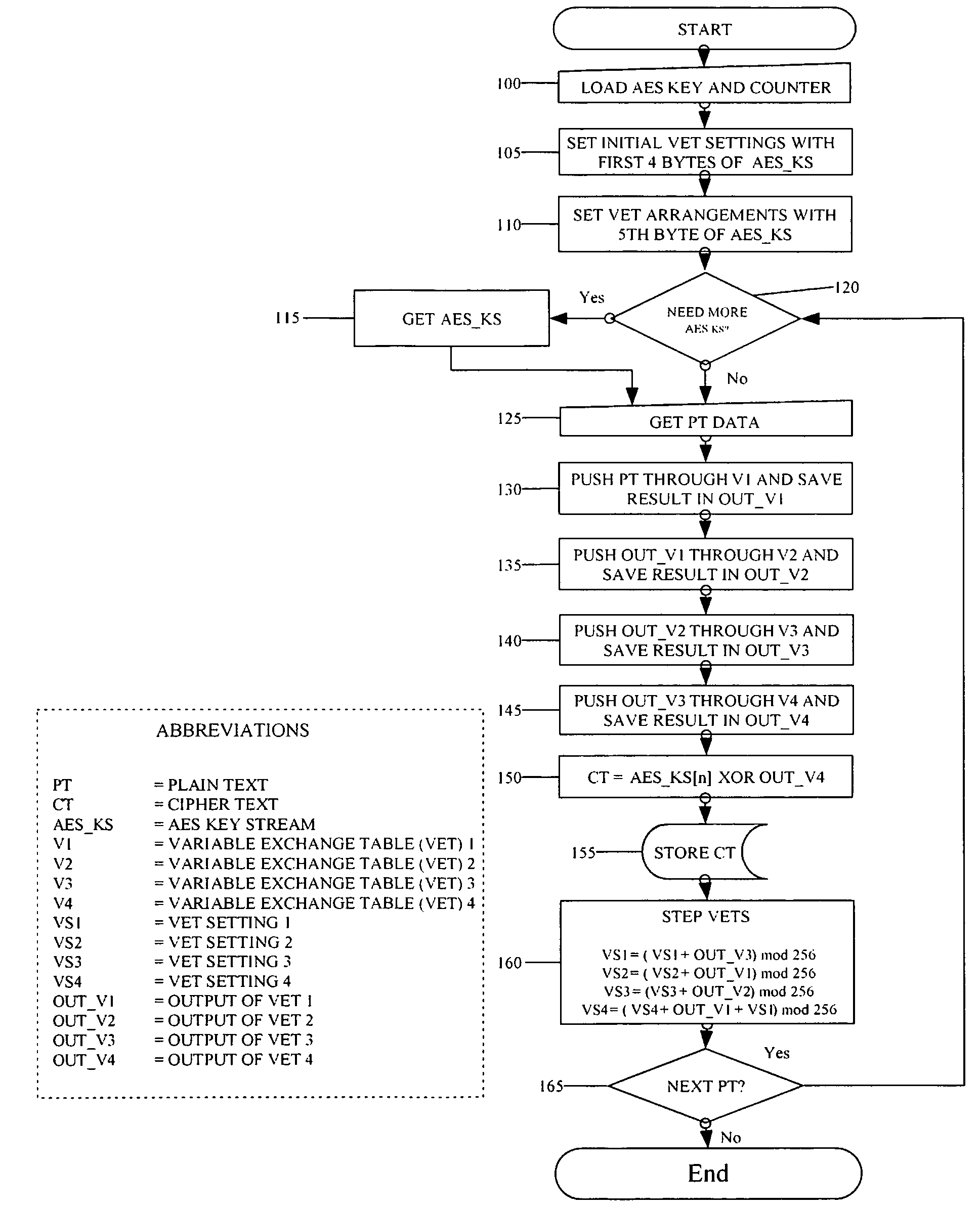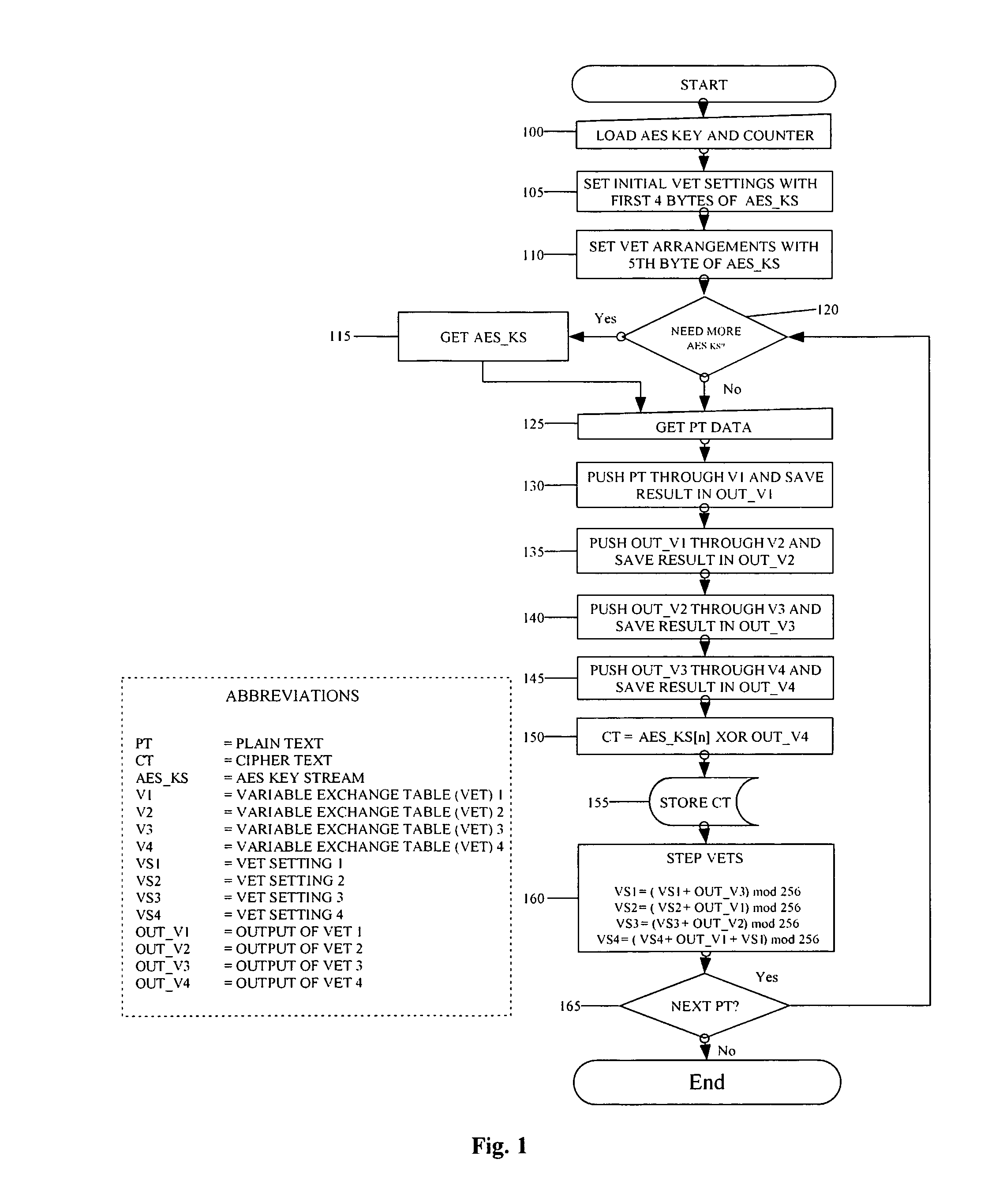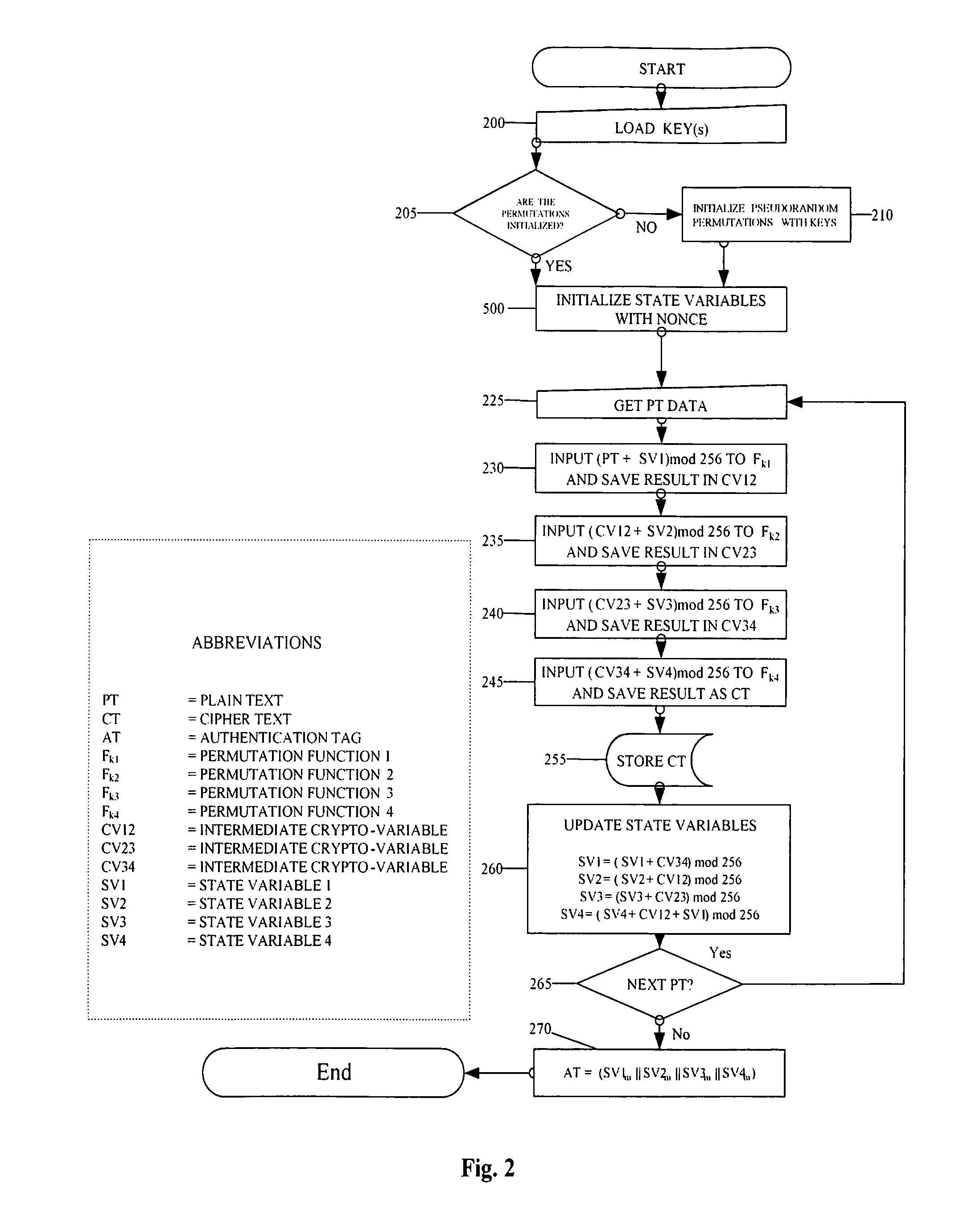Encrypting a plaintext message with authentication
a plaintext message and plaintext technology, applied in the field of data communication and storage, can solve the problems of inability to ensure the integrity or authenticity of information by manipulating detection abilities, inability to ensure the integrity of information, and easy computation but almost impossible to reverse, so as to achieve low levels of processing resources, memory and latency requirements, and efficient integration integrity
- Summary
- Abstract
- Description
- Claims
- Application Information
AI Technical Summary
Benefits of technology
Problems solved by technology
Method used
Image
Examples
Embodiment Construction
[0037]FIGS. 1 and 2 represent two versions of the flow chart explaining the steps of encryption for the present invention. FIG. 1 was the original diagram as can be found in the provisional patent of the present invention. While maintaining the essential core of the invention, FIG. 2 is the revised encryption diagram with a more clear representation and the elimination of unneeded steps. Before explaining the details of the revised diagram, it is good to note the difference between the two diagrams.
[0038]The original diagram uses the term Variable Exchange Table (VET) which is now referred to as the more generally used and understood term, pseudorandom permutation. Furthermore, what was originally denoted as a VET Setting (VS) is now referred to as a state variable (SV), and the Output of a VET is now referred to as an intermediate cryptographic variable (CV). The terms have been modified for ease of understanding.
[0039]FIG. 1 contains all of the same steps as the revised diagram ex...
PUM
 Login to View More
Login to View More Abstract
Description
Claims
Application Information
 Login to View More
Login to View More - R&D
- Intellectual Property
- Life Sciences
- Materials
- Tech Scout
- Unparalleled Data Quality
- Higher Quality Content
- 60% Fewer Hallucinations
Browse by: Latest US Patents, China's latest patents, Technical Efficacy Thesaurus, Application Domain, Technology Topic, Popular Technical Reports.
© 2025 PatSnap. All rights reserved.Legal|Privacy policy|Modern Slavery Act Transparency Statement|Sitemap|About US| Contact US: help@patsnap.com



